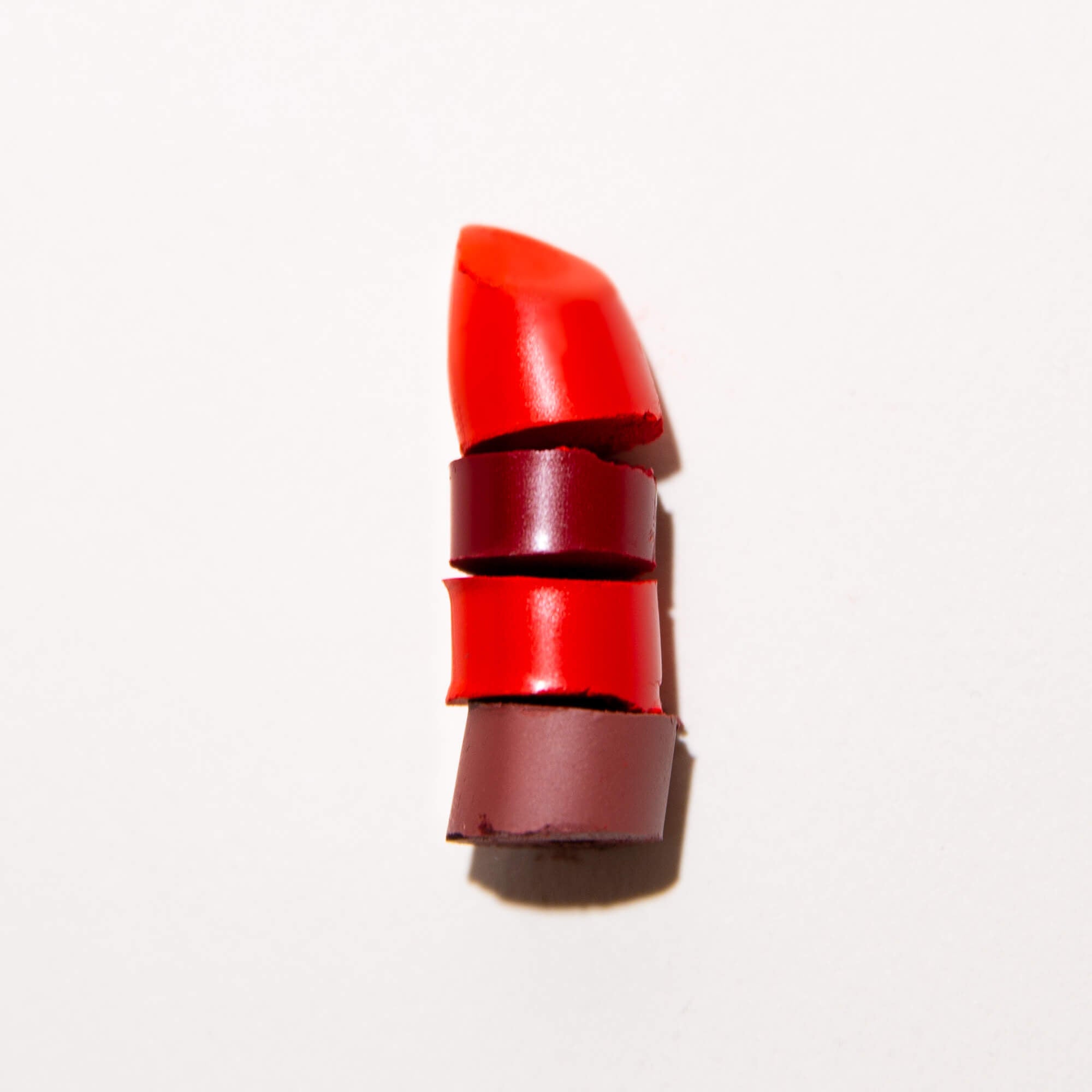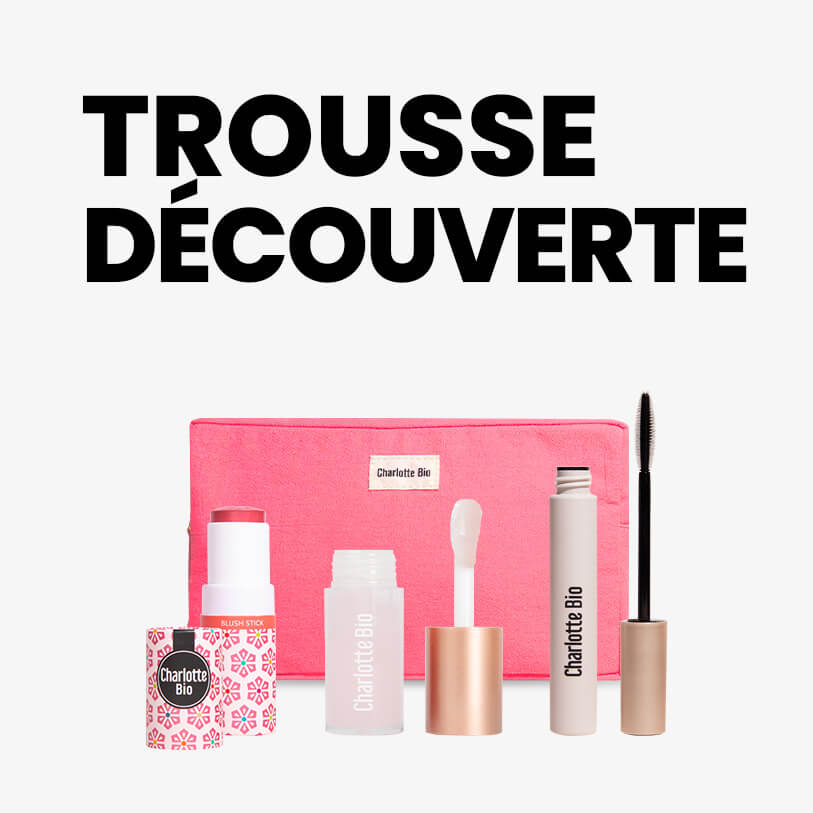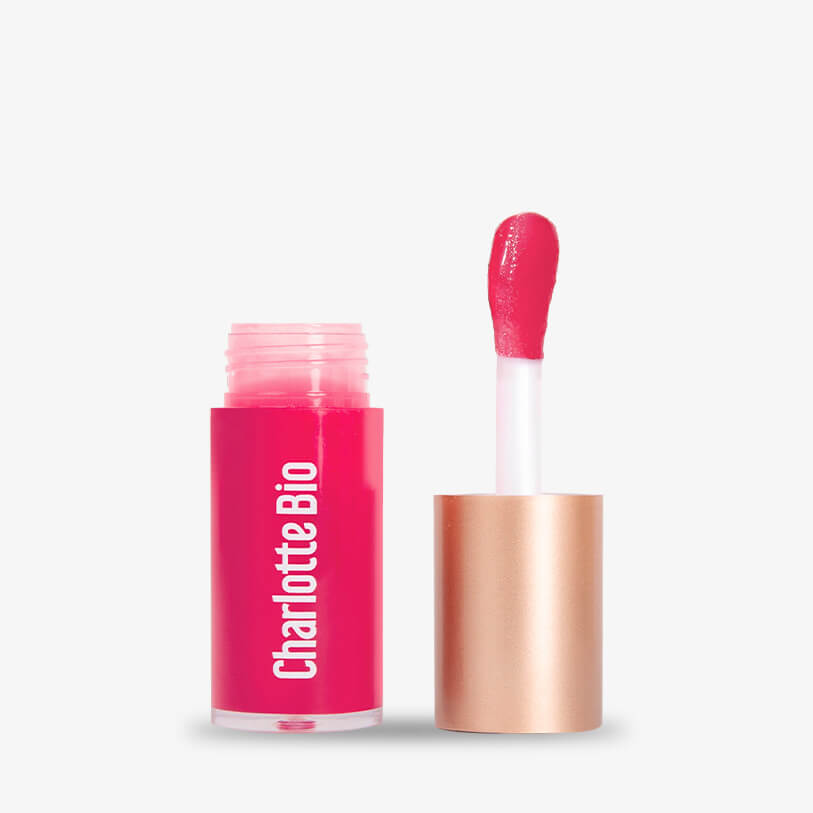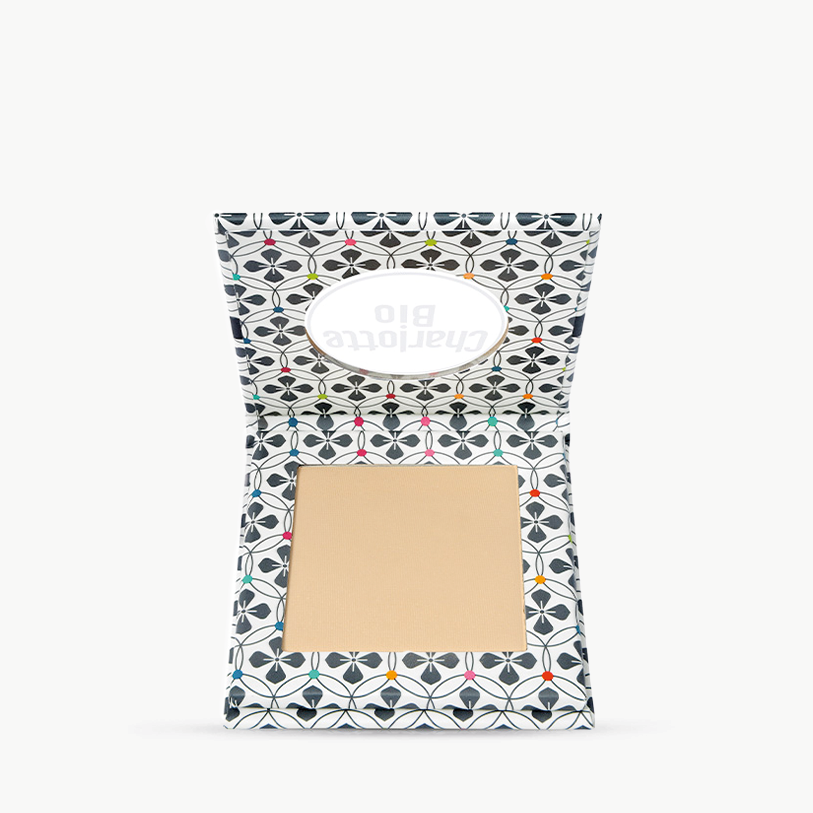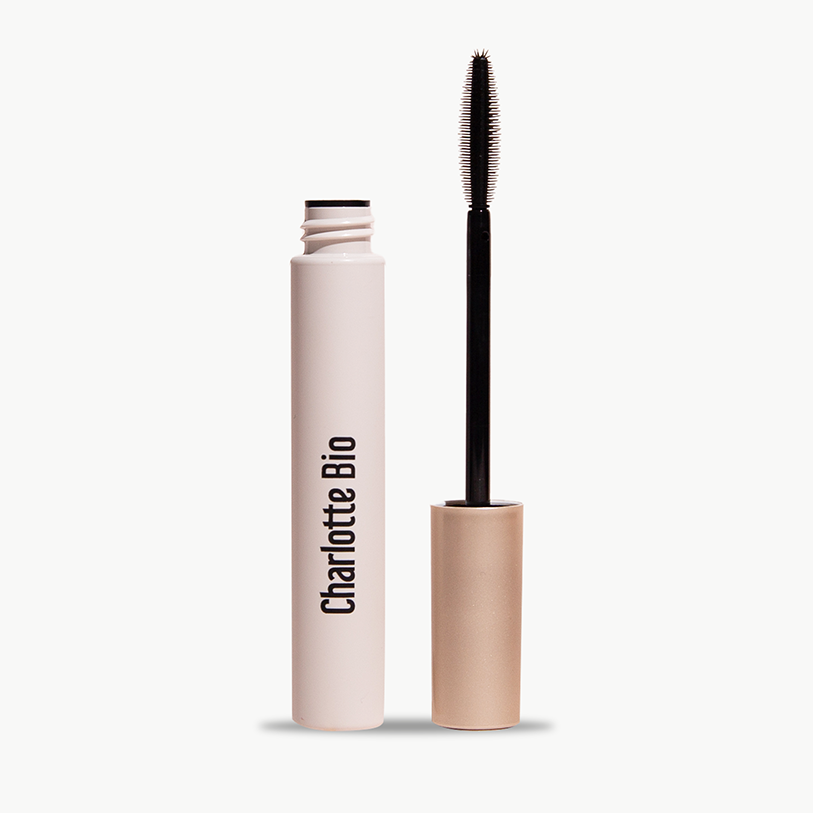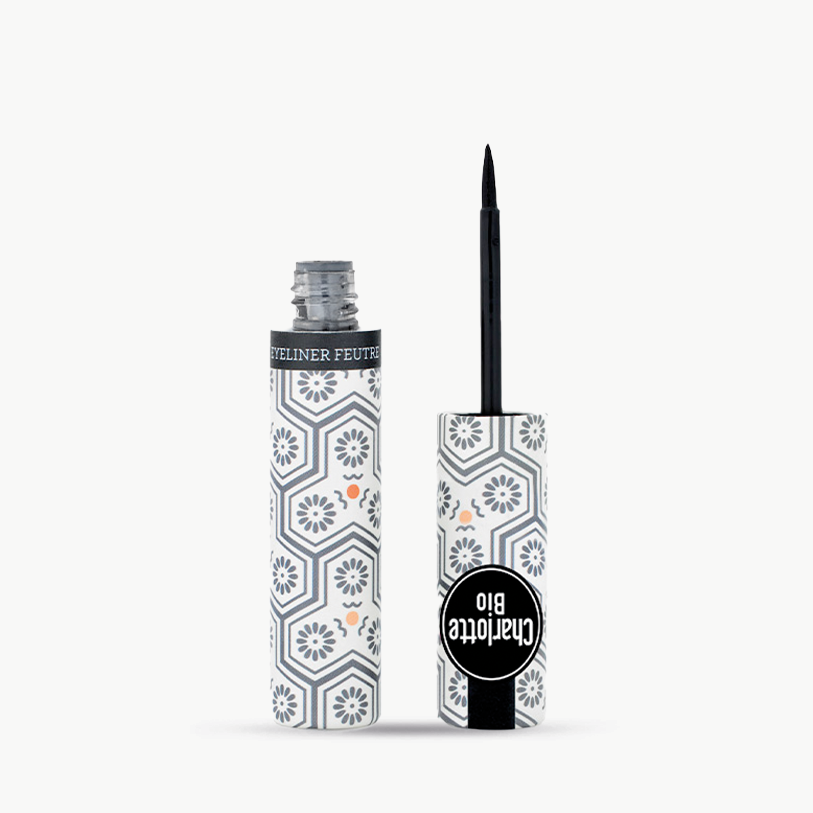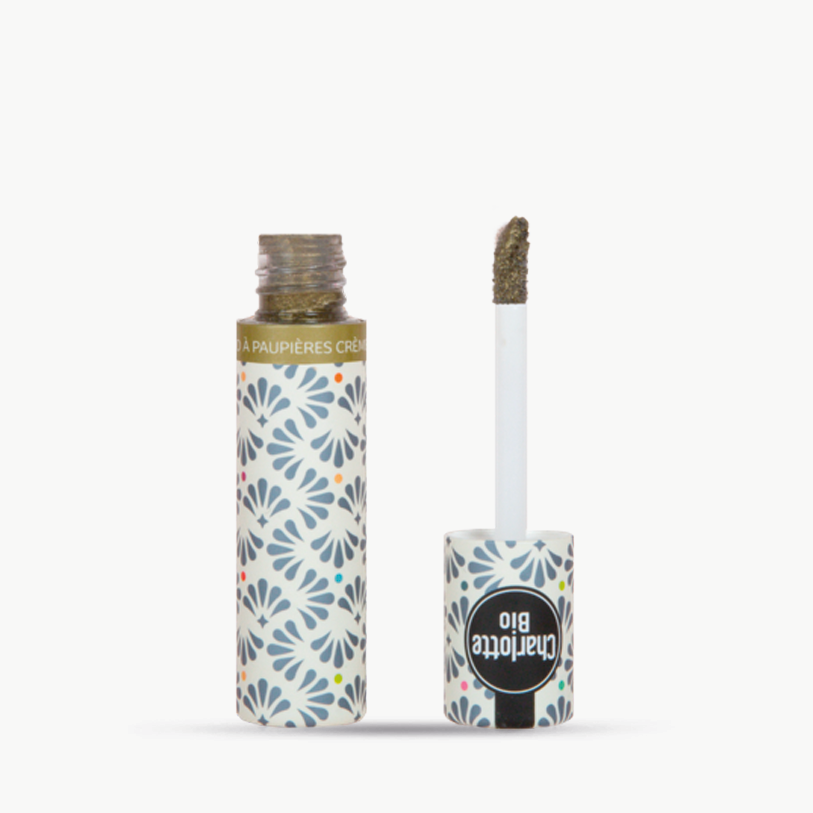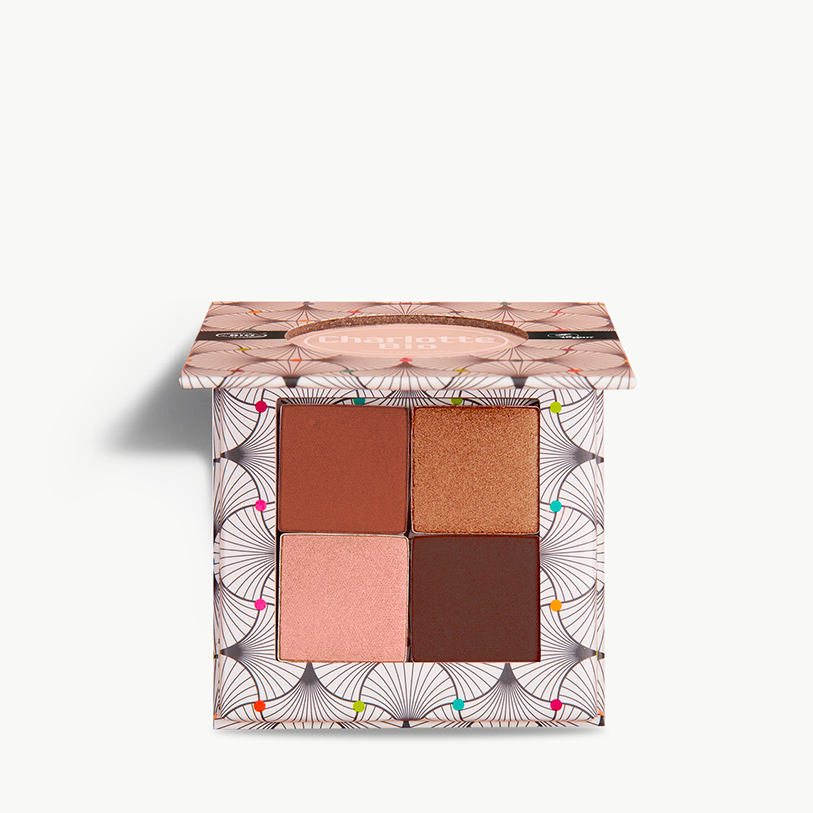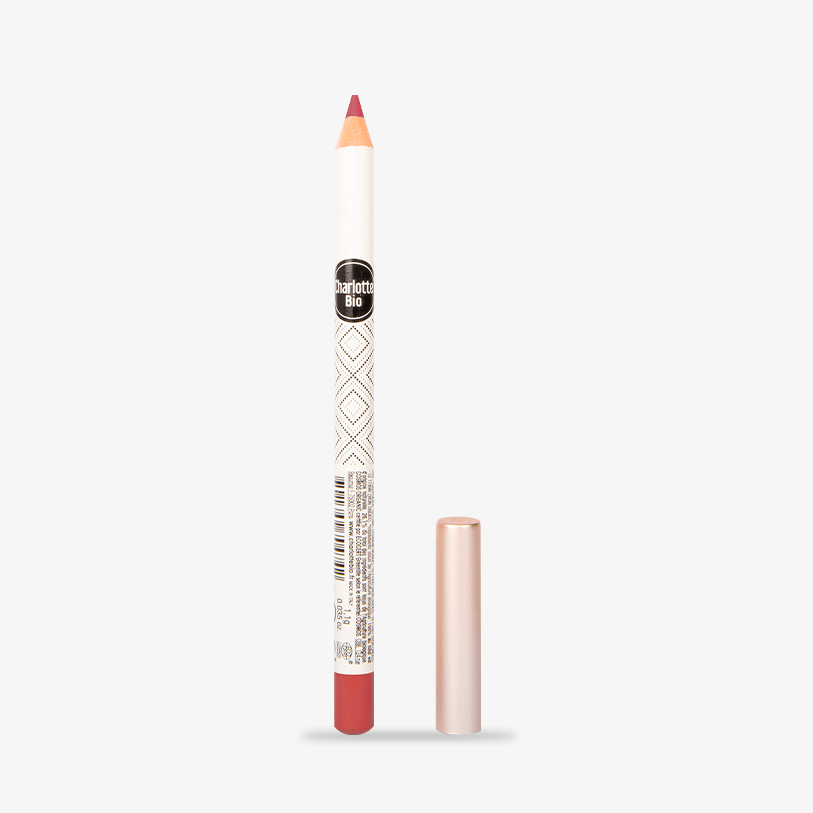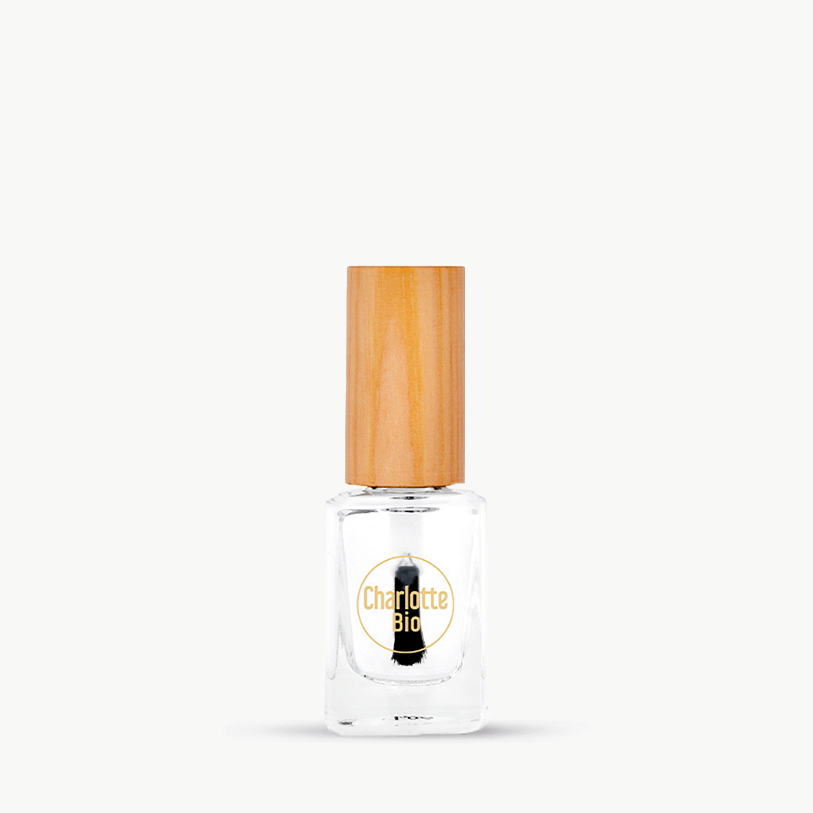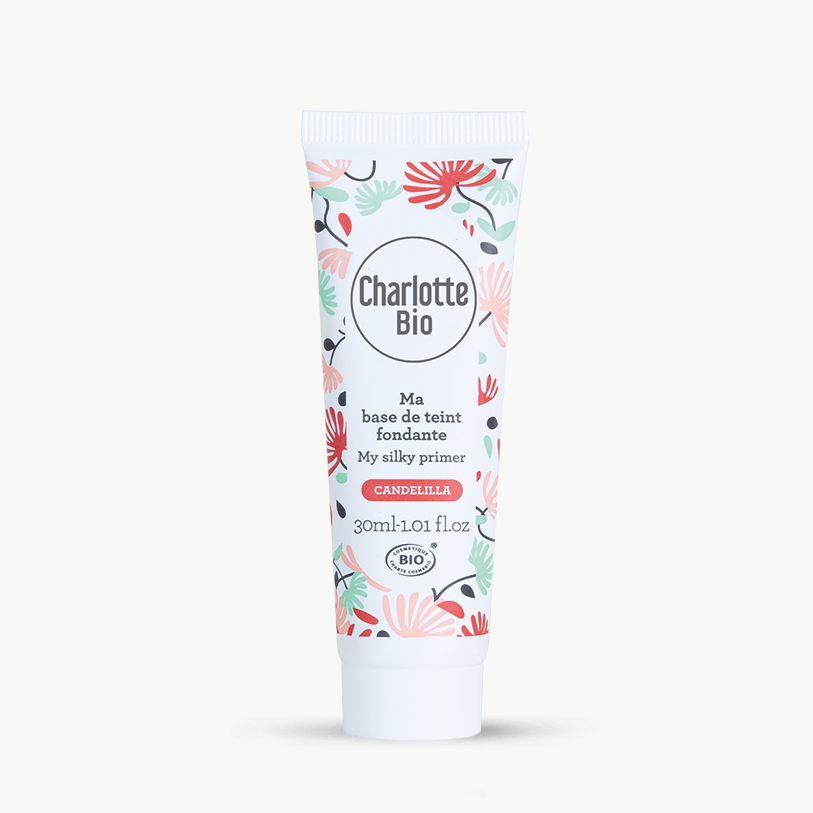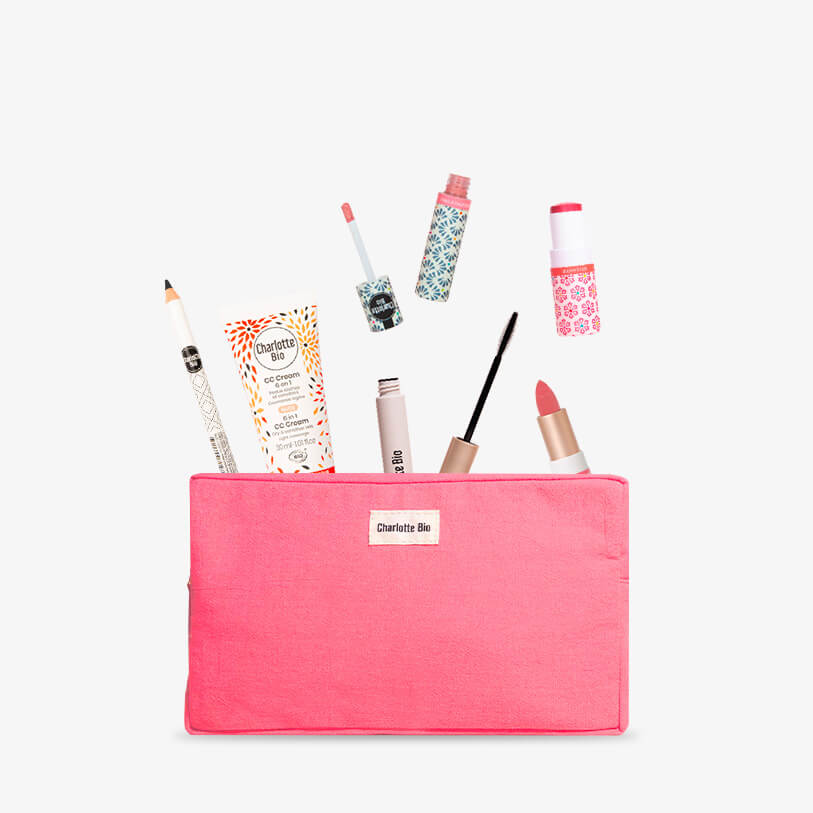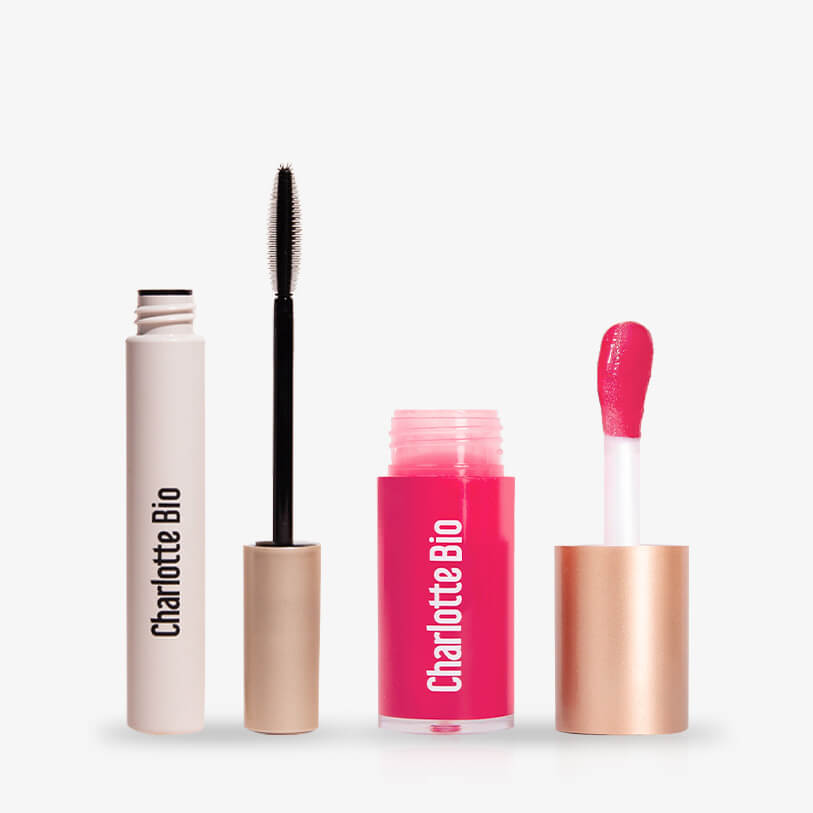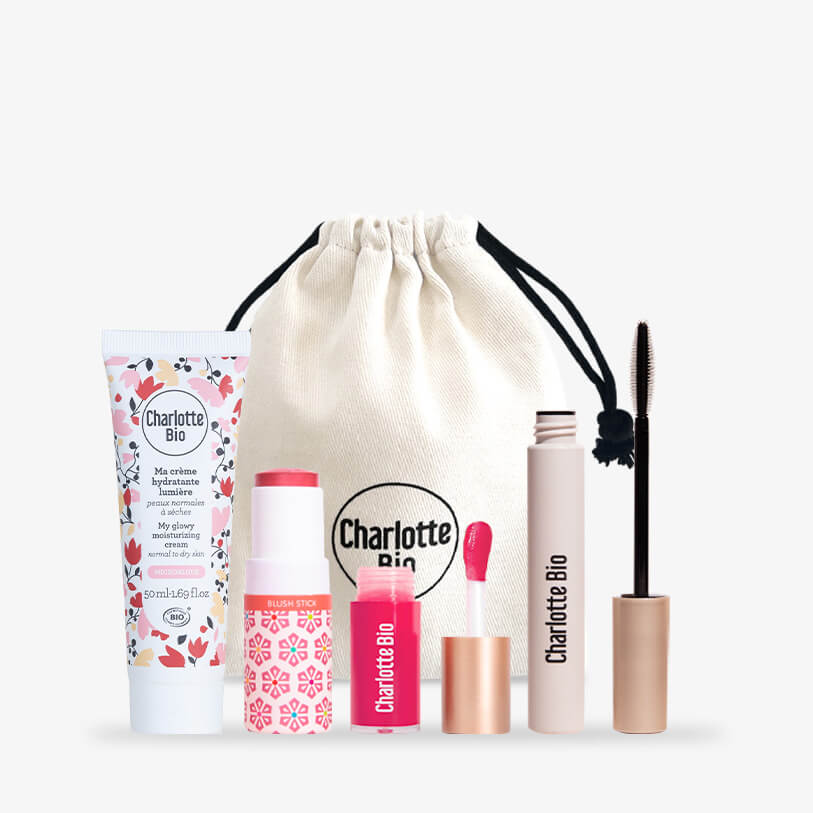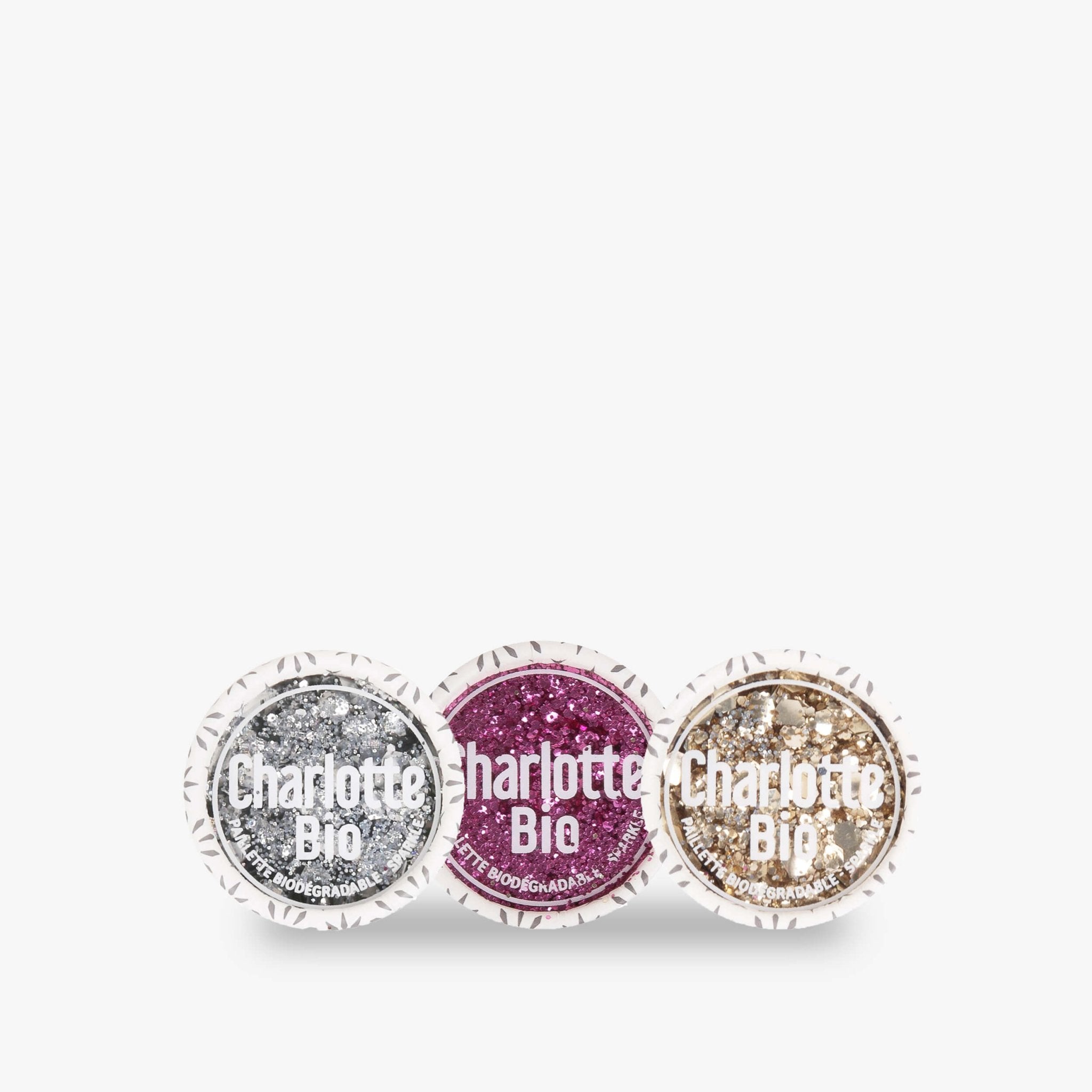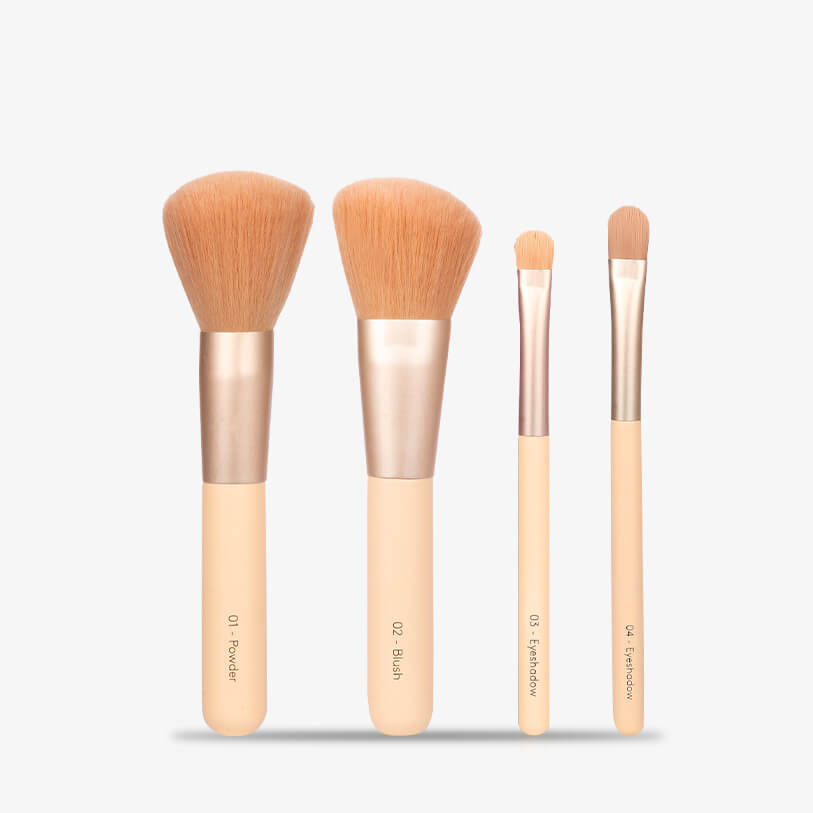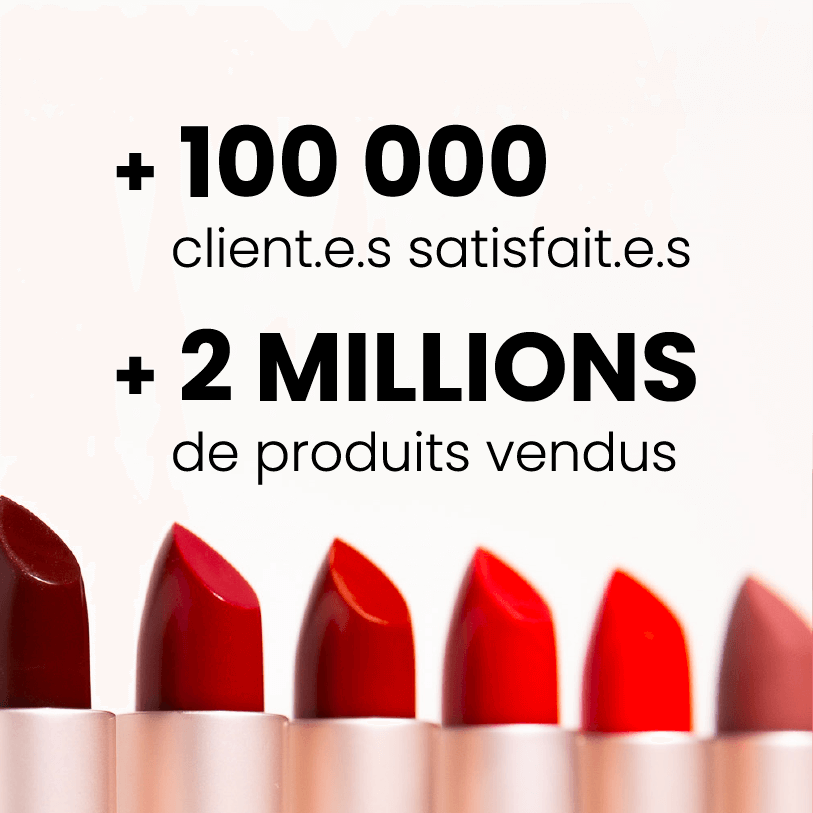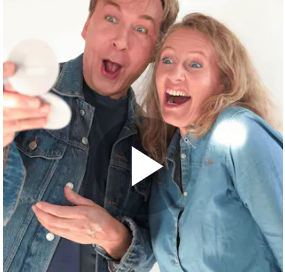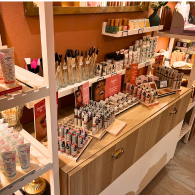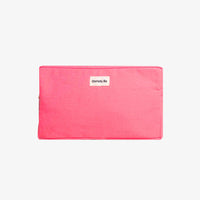In total transparency! The Blacklist of Cosmetic Ingredients
Our values, and our promises :
They are in 3 lines:
- offer you products that are at least as effective, long-lasting and sensory as conventional products,
- offer you the most accessible products possible,
- offer you healthy, organic products with a clean, most natural composition possible
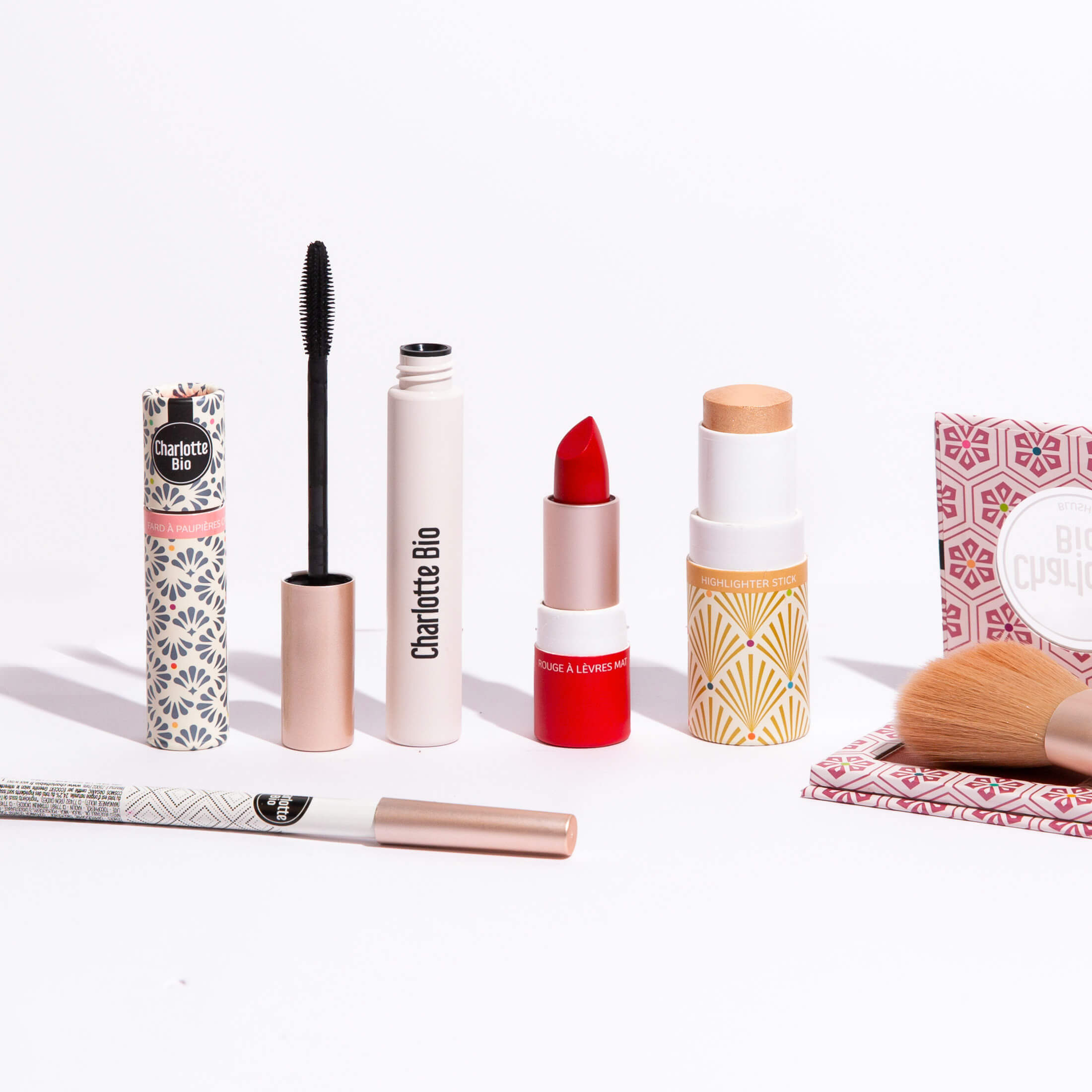
Why is it essential to be interested in the composition of my cosmetic products?
Well, quite simply because if you know the ingredients, you know EXACTLY what you are putting on your skin, and you are taking care of it!
Today, you are confronted every day with dozens of brands and products, all of which claim to be more " green or " " clean " than the others, without ever detailing their composition or highlighting their labels.
This is called "Greenwashing"!
This method consists of making you believe that the product is organic, or natural, and healthy (with green on the packaging, a leaf here and there...) whereas, if we decipher the composition, we realize that it is false, and that it is only marketing!
In summary, what ingredients are really harmful & to avoid:
The list is very long!
And above all, it is getting longer every day as studies are carried out...
To make things easier for you, we have compiled a non-exhaustive list of blacklisted ingredients to avoid in cosmetics.
We hope that this list will be useful to you, and that thanks to it you will be able to decipher the ingredients to avoid 💪🏼
Aluminum
Skin/Texture or Formula Interest:
Aluminum salts are found in deodorants because they have anti-odor properties and prevent the glands from secreting perspiration.
In what type of product can you find it:
Deodorants and sunscreens
Why is it dangerous?
Carcinogenic, toxic and can trigger neurological diseases
Organic equivalent:
👉🏼 Sage and Magnesium
BHA and BHT
Skin/Texture or Formula Interest:
Butylated hydroxyanisole and butylhydroxytoluene are fatty acid antioxidants.
In what type of product can you find it:
Lip balm, shaving gels, deodorants, body oils or lotions, makeup removers and lipstick
Why is it dangerous?
Toxic and carcinogenic to vital organs (lungs, kidneys, liver)
Organic equivalent:
👉🏼 Natural antioxidant Tocopherol (vitamin E)
Dibutyl phthalate
Skin/Texture or Formula Interest:
Plasticizing properties
In what type of product can you find it:
Nail polish
Why is it dangerous?
Clogs skin pores. Carcinogenic, mutagenic, toxic to the skin, promotes the appearance of blemishes and sebum. Poorly biodegradable and pollutes the environment.
Organic equivalent:
👉🏼 Polysorb ID 37
Synthetic fragrance
Skin/Texture or Formula Interest:
Adds fragrance to the product
In what type of product can you find it:
All types of products
Why is it dangerous?
Irritant potential
Organic equivalent:
👉🏼 Natural perfumes
Mineral oils
Skin/Texture or Formula Interest:
Protects the skin from dehydration. Effective for cleansing and removing makeup. Improves the quality of textures.
In what type of product can you find it:
Face creams, body creams, night creams, makeup, foundation
Why is it dangerous?
Polluting and comedogenic. Irritating to the skin. Some are derived from petrochemicals.
Organic equivalent:
👉🏼 Vegetable oils (Jojoba oil, Coconut oil, Sunflower oil, Sesame oil)
Formaldehyde releasers
Skin/Texture or Formula Interest:
Conservative
In what type of product can you find it:
Nail hardeners
Why is it dangerous?
Gradually releases small amounts of formaldehyde (irritant and suspected carcinogen)
Organic equivalent:
👉🏼 Does not exist
Methylisothiazolinone
Skin/Texture or Formula Interest:
Preservative used to replace parabens.
In what type of product can you find it:
Shampoos, shower gels, skin creams, baby wipes...Completely prohibited in leave-in products
Why is it dangerous?
Irritant and may cause contact eczema
Organic equivalent:
👉🏼 Preservatives allowed in organic: sodium benzoate for example.
Parabens
Skin/Texture or Formula Interest:
Preservatives: will prevent the proliferation of bacteria in the product.
In what type of product can you find it:
Self-tanners, deodorants, oral hygiene products, hair products, baby care products, makeup, skin care, nail polish...
Why is it dangerous?
Endocrine disruptor: can create physiological problems
Organic equivalent:
👉🏼 Sodium benzoate, Dehydroacetic acid
Phenoxyethanol
Skin/Texture or Formula Interest:
Preservative: will prevent the proliferation of bacteria in the product
In what type of product can you find it:
Baby products
Why is it dangerous?
Irritant potential
Organic equivalent:
👉🏼 Sodium benzoate or Dehydroacetic acid
Propylene Glycol
Skin/Texture or Formula Interest:
It is a solvent that helps retain moisture in a formula and create a smooth, uniform and consistent product.
In what type of product can you find it:
Face creams, hair dyes, intimate wipes, mouthwashes, scented mist
Why is it dangerous?
Derived from petrochemicals. May present a risk to the environment.
Organic equivalent:
👉🏼 Végétol
Sodium Laureth Sulfate (SLES)
Skin/Texture or Formula Interest:
It has cleansing, purifying, and foaming properties. It is produced by ethoxylation (adding alcohols and phenols to ethylene oxide), this process is prohibited in organic farming!
In what type of product can you find it:
Rinse-off cosmetics (shampoos, toothpastes, deodorants, creams, makeup and others...)
Why is it dangerous?
Clogs skin pores, promotes the appearance of blemishes and sebum. Poorly biodegradable and pollutes the environment.
Organic equivalent:
👉🏼 Sodium Lauryl Sulfate (SLS) and Sodium Coco Sulfate (SCS)
Triclosan
Skin/Texture or Formula Interest:
Antibacterial
In what type of product can you find it:
Hygiene and beauty products such as soap, toothpaste and deodorants
Why is it dangerous?
Endocrine disruptor acting on estrogen hormones and thyroid function
Organic equivalent:
👉🏼 Dehydroacetic acid, benzyl alcohol, benzoic acid
Artificial colors
Skin/Texture or Formula Interest:
Used to tint products to the desired color
In what type of product can you find it:
Lipstick, foundation, blush, mascara, nail polish, pencil etc.
Why is it dangerous?
Carcinogenic, allergenic and photosensitizing risks
Organic equivalent:
👉🏼 Natural colorants from plants (they usually start with CI-77 in an INCI list) and Magnesium
Chlorphenesin
Skin/Texture or Formula Interest:
It is an antimicrobial preservative.
In what type of product can you find it:
Anti-aging eye creams, masks, concealers...
Why is it dangerous?
Derived from chlorine. Highly polluting manufacturing process.
Organic equivalent:
👉🏼 Sodium benzoate or dehydroacetic acid
EDTA
Skin/Texture or Formula Interest:
Helps stabilize cosmetic formulas
In what type of product can you find it:
Shampoos and shower gel
Why is it dangerous?
Pollutes the environment and aquatic environments. Irritating to eyes, can cause eczema
Organic equivalent:
👉🏼 Citric acid, phytic acid
Palm oil
Skin/Texture or Formula Interest:
It has an emollient power, in fact, it softens and smooths the skin
In what type of product can you find it:
Moisturizing creams, makeup removers, body, hair or face oils,
Why is it dangerous?
It leads to deforestation and threatens the extinction of certain animal species.
Organic equivalent:
👉🏼 Aloe Vera, Sunflower Oil, Jojoba Oil, Coconut Oil, Sesame Oil
Hydroquinone
Skin/Texture or Formula Interest:
Reduces or inhibits the odor of a product and improves the stability and shelf life of a product. It is also a brightening and antioxidant agent.
In what type of product can you find it:
Hair varnish and coloring
Why is it dangerous?
Risks of skin allergies, carcinogens and toxicity to marine wildlife
Organic equivalent:
👉🏼 Licorice extract and ascorbic acid
Heavy metals (lead, arsenic, cadmium, mercury, nickel, chromium, antimony, iron, copper, cobalt, etc.)
Skin/Texture or Formula Interest:
They are used in pigments and dyes in certain products.
In what type of product can you find it:
Lipsticks
Why is it dangerous?
Carcinogenic risks
Organic equivalent:
👉🏼 Does not exist
GMOs (genetically modified organisms)
Skin/Texture or Formula Interest:
Substitute for natural plants that grow faster, easier and in greater quantities
In what type of product can you find it:
All cosmetics
Why is it dangerous?
Clogs skin pores, promotes the appearance of blemishes and sebum. Poorly biodegradable and pollutes the environment.
Organic equivalent:
👉🏼 Organic cosmetics
PEG
Skin/Texture or Formula Interest:
Thickener, emulsifier, surfactant or humectant
In what type of product can you find it:
Cosmetic products or shampoos
Why is it dangerous?
Petroleum derivatives. Suspected of being carcinogenic. Very poorly biodegradable. Pollutant
Organic equivalent:
👉🏼 Butter, gum, wax and/or oil of vegetable origin
Phthalates
Skin/Texture or Formula Interest:
Fixing and plasticizing agents
In what type of product can you find it:
Perfumes, varnishes, cosmetic packaging
Why is it dangerous?
Suspected of being endocrine disruptors: can create physiological problems
Organic equivalent:
👉🏼 Polysorb ID 37, 100% bio-sourced plasticizer
Silicone
Skin/Texture or Formula Interest:
Brings sensoriality, smoothing action on the skin. They will blur the pores.
In what type of product can you find it:
Rinse-off cosmetics (shampoos, toothpastes, deodorants, creams, makeup and others...)
Why is it dangerous?
Clogs skin pores, promotes the appearance of blemishes and sebum. Poorly biodegradable and pollutes the environment.
Organic equivalent:
👉🏼 Lipolami and synergy of butters and vegetable oils
Sulfate
Skin/Texture or Formula Interest:
Surfactant. Foaming agent
In what type of product can you find it:
Foaming cleansing cosmetics (shower gels, shampoos, exfoliants, facial cleansing gels, etc.)
Why is it dangerous?
Clogs skin pores, promotes the appearance of blemishes and sebum. Poorly biodegradable and pollutes the environment.
Organic equivalent:
👉🏼 Sodium Lauryl Sulfate (SLS) and Sodium Coco Sulfate (SCS)
Triethanolamine
Skin/Texture or Formula Interest:
Adds texture by thickening cosmetic formulas
In what type of product can you find it:
Styling gel, shaving gel, shaving foam
Why is it dangerous?
Toxic to skin, immune system and respiratory tract
Organic equivalent:
👉🏼 Does not exist
